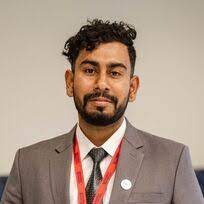Tied aid: A development challenge that refuses to go away
03 May 2024

Nishchhal Kharal, Executive Director of Freedom Studio in Nepal and a #ShiftThePower Fellow
It may be surprising, but this is how development aid has functioned for about 75 years. Less than 10% of international aid funds directly flow from OECD’s Development Assistance Committee (DAC) donor countries to civil society organizations (CSOs) in the Global South. Although additional funding might flow indirectly through INGOs or donor organizations to CSOs in the Global South, there is no doubt that a significant portion of these funds are used in the donor country itself. Such indirect funding often moves through multiple layers of organizations within the donor country. By the time it reaches the CSOs of the Global South, the real allocated funds have been extensively reduced.
Even after receiving aid, CSOs in the Global South encounter significant challenges in deciding how the money should be spent. Procurement of goods and services during the project implementation poses significant barriers, as donors usually require local CSOs to follow their guidelines while purchasing materials and resources using donor funds. This often requires them to use the aid money to buy materials and engage human resources from the donor country or a selected group of countries and their companies. The development aid term for all this is “Tied Aid”, a reference to restrictions on CSOs from the Global South to access and utilize funding and resources freely.
Tied aid not only hinders the ability of CSOs from the Global South to address the local community needs effectively and independently, but it also humiliates them, as it limits their autonomy and opportunities, and also undermines the products, capacity, and expertise of their community and their country. The micro-management of aid by the donor organizations and countries asserts their authority and control over the development process and global commitment to sustainable development. Its existence erodes and undermines the confidence of activist and grassroots development practitioners and reinforces the notion that they cannot manage their own affairs optimally. Tied Aid perpetuates a vicious cycle of underdevelopment and increases power imbalances between rich and poor countries because it directly or indirectly prioritizes donor countries’ interests over recipient communities’ needs. Ironically, because Tied Aid also restricts who can apply for grants, it also contradicts the principle of a free market economy, an ideological cornerstone of the Western world.
This is an excerpt of a blog written by Nishchhal Kharal, Executive Director of Freedom Studio in Nepal and a #ShiftThePower Fellow. To read the piece in its entirety, head to the #ShiftThePower Treehouse.
Read the #TooSouthernToBeFunded report and add your signature to the open letter to the OECD DAC.


